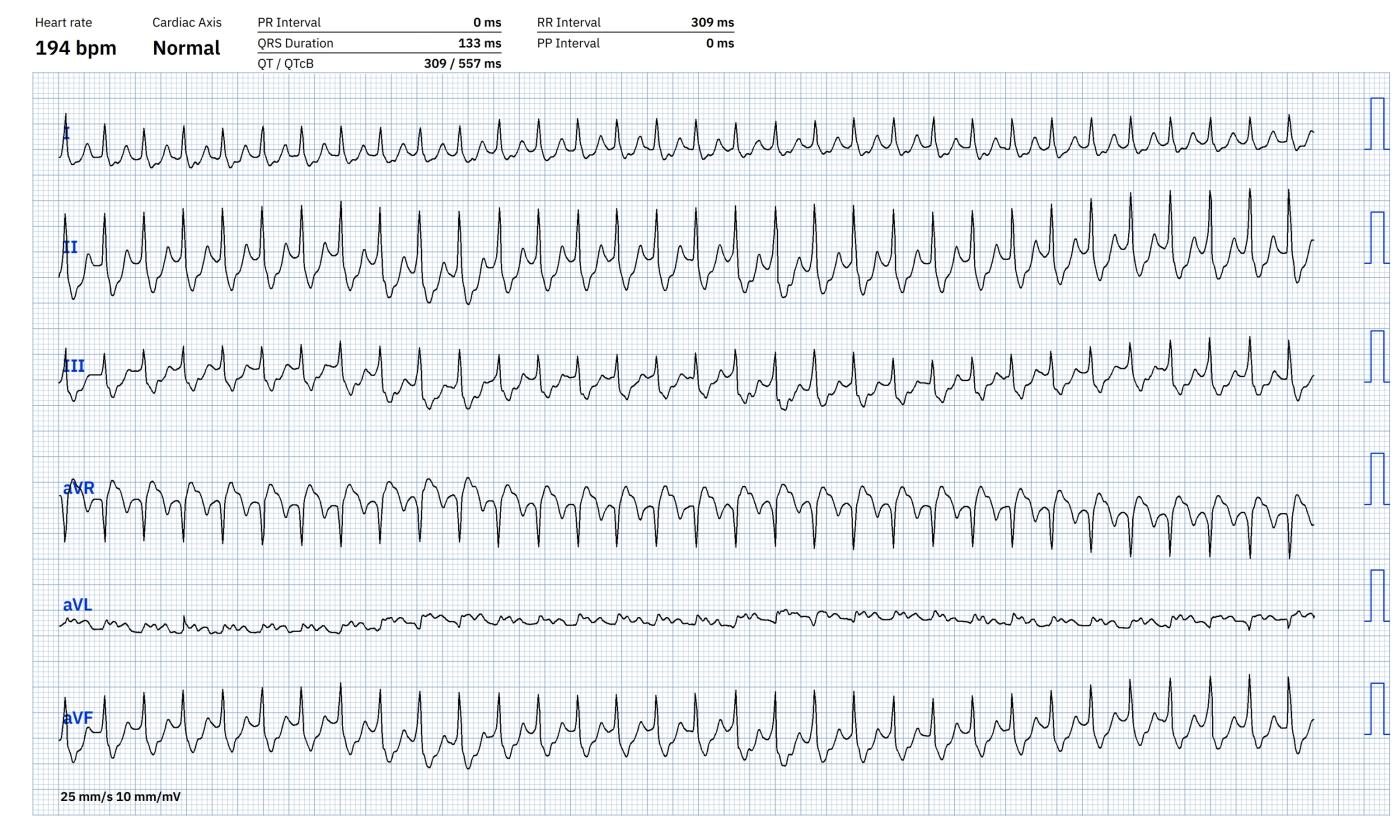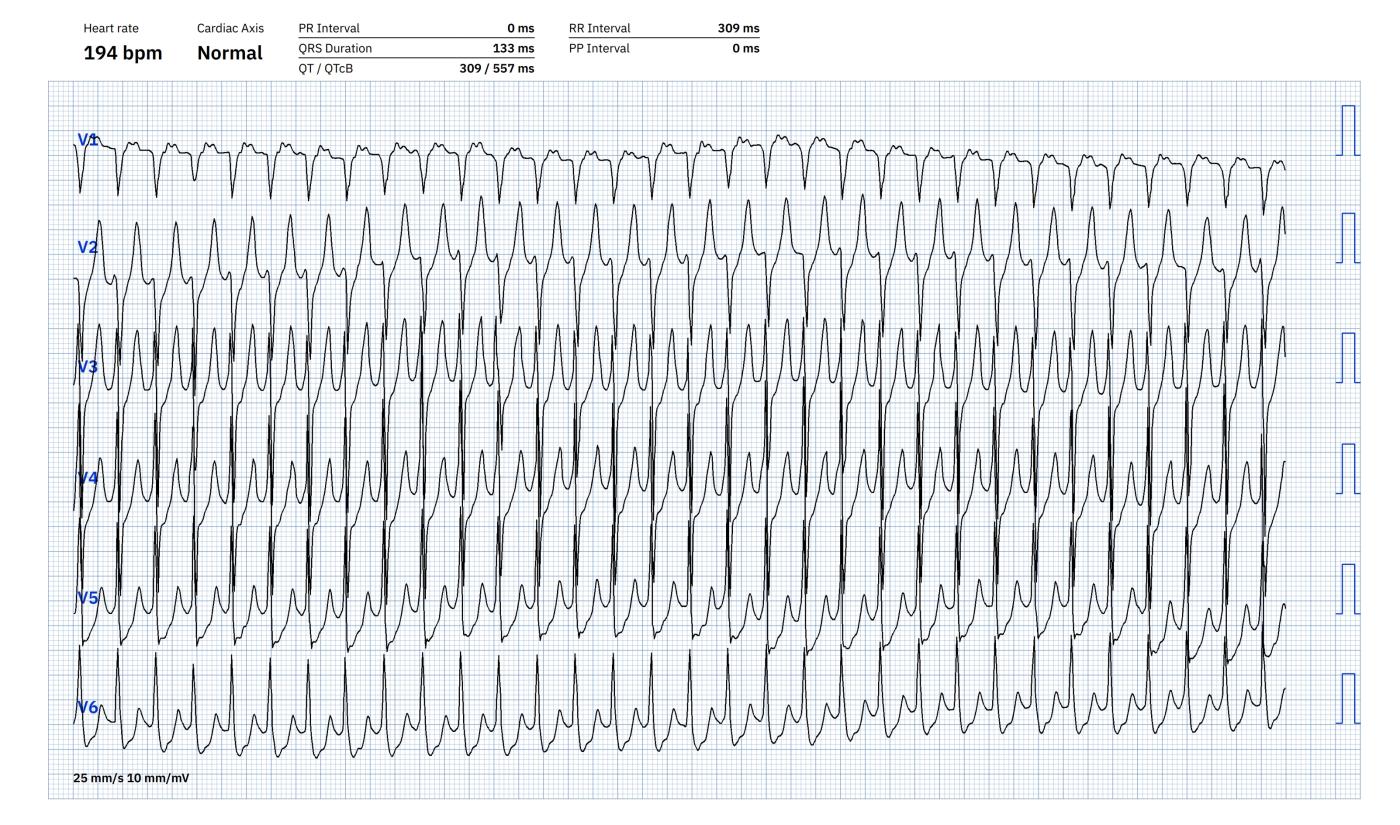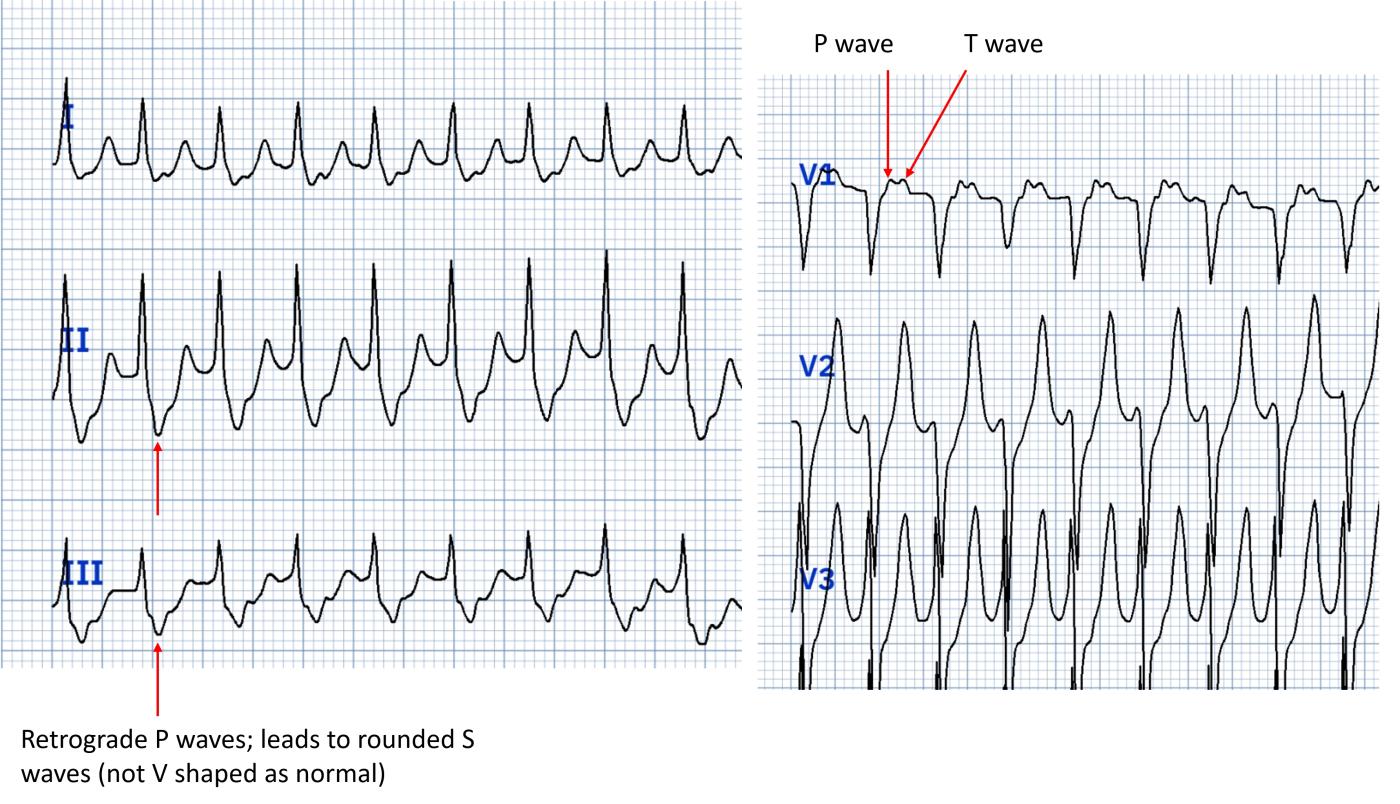18-year-old male; palpitations lasting hours, beginning at the age of 10. What arrhythmia is present? Let's first consider the heart rate: with a heart rate of 194 beats/min, the heart rate is too low for atrial flutter (1:1) (except in patients who have been pre-treated with medication), and the rate would be unusually high for atrial flutter with 2:1 conduction. Due to the regularity of the heart rhythm, atrial fibrillation can also be ruled out. This leaves atrial tachycardia, junctional tachycardia, AVNRT, and AVRT as possibilities. When looking at the inferior leads, it is noticeable that the S waves do not have the usual V shape but appear rounded. Here, the retrograde P waves are hidden, which are negative in these leads for AVNRT and AVRT. The rate would be unusually high again for junctional tachycardia. While atrial tachycardia cannot be completely ruled out, it would also be a very unusual form. This leaves AVNRT and AVRT as possibilities. Since the retrograde P waves immediately follow the QRS complex (i.e., very short RP interval), the most likely diagnosis here is AVNRT.
-

- Dr A Röschl's blog
- Log in or register to post comments
All our content is FREE & COPYRIGHT FREE for non-commercial use
Please be courteous and leave any watermark or author attribution on content you reproduce.




